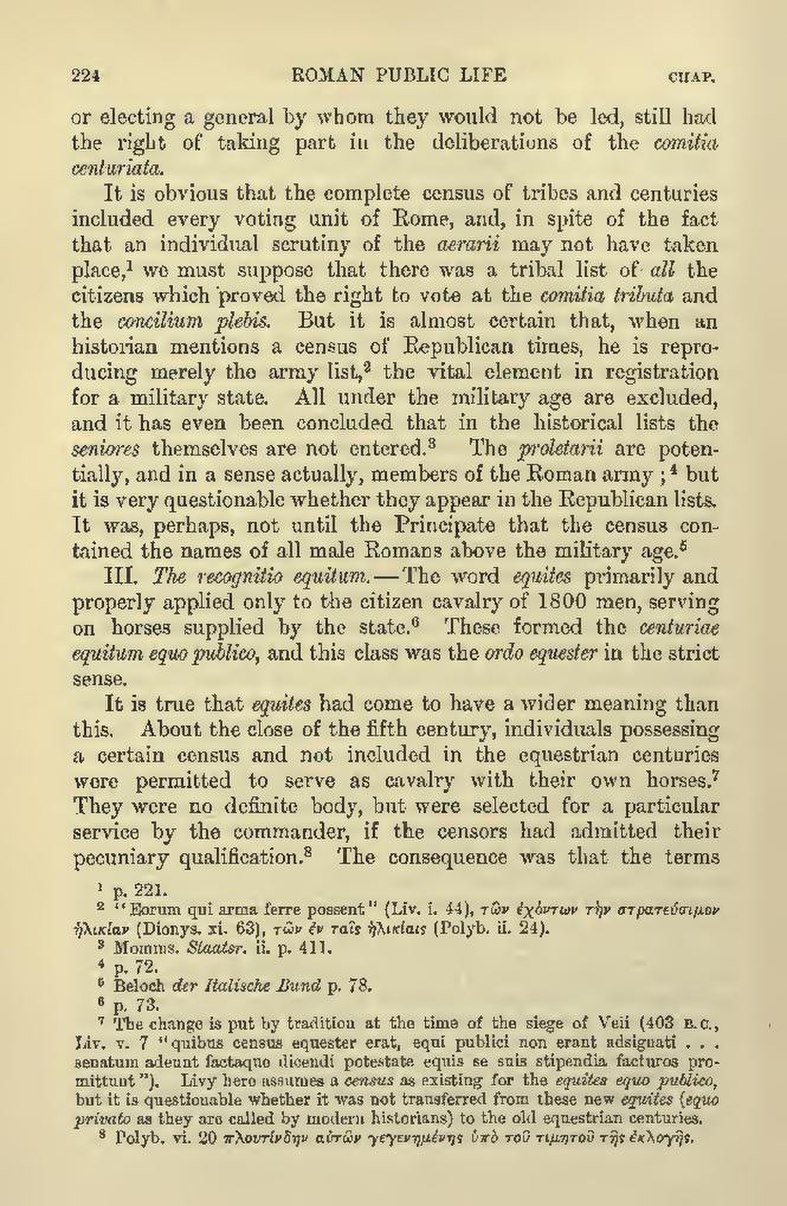or electing a general by whom they would not be led, still had the right of taking part in the deliberations of the comitia centuriata.
It is obvious that the complete census of tribes and centuries included every voting unit of Rome, and, in spite of the fact that an individual scrutiny of the aerarii may not have taken place,[1] we must suppose that there was a tribal list of all the citizens which proved the right to vote at the comitia tributa and the concilium plebis. But it is almost certain that, when an historian mentions a census of Republican times, he is reproducing merely the army list,[2] the vital element in registration for a military state. All under the military age are excluded, and it has even been concluded that in the historical lists the seniores themselves are not entered.[3] The proletarii are potentially, and in a sense actually, members of the Roman army;[4] but it is very questionable whether they appear in the Republican lists. It was, perhaps, not until the Principate that the census contained the names of all male Romans above the military age.[5]
III. The recognitio equitum.—The word equites primarily and properly applied only to the citizen cavalry of 1800 men, serving on horses supplied by the state.[6] These formed the centuriae equitum equo publico, and this class was the ordo equester in the strict sense.
It is true that equites had come to have a wider meaning than this. About the close of the fifth century, individuals possessing a certain census and not included in the equestrian centuries were permitted to serve as cavalry with their own horses.[7] They were no definite body, but were selected for a particular service by the commander, if the censors had admitted their pecuniary qualification.[8] The consequence was that the terms(Dionys. xi. 63), [Greek: tôn en tais hêlikiais] (Polyb. ii 24).].]
- ↑ p. 221.
- ↑ "Eorum qui arma ferre possent" (Liv. i. 44), [Greek: tôn echontôn tên strateusimon hêlikian
- ↑ Momms. Staatsr. ii. p. 411.
- ↑ p. 72.
- ↑ Beloch der Italische Bund p. 78.
- ↑ p. 73.
- ↑ The change is put by tradition at the time of the siege of Veii (403 B.C., Liv. v. 7 "quibus census equester erat, equi publici non erant adsignati . . . senatum adeunt factaque dicendi potestate equis se suis stipendia facturos promittunt"). Livy here assumes a census as existing for the equites equo publico, but it is questionable whether it was not transferred from these new equites (equo privato as they are called by modern historians) to the old equestrian centuries.
- ↑ Polyb. vi. [Greek: ploutindên autôn gegenêmenês hypo tou timêtou tês eklogês
